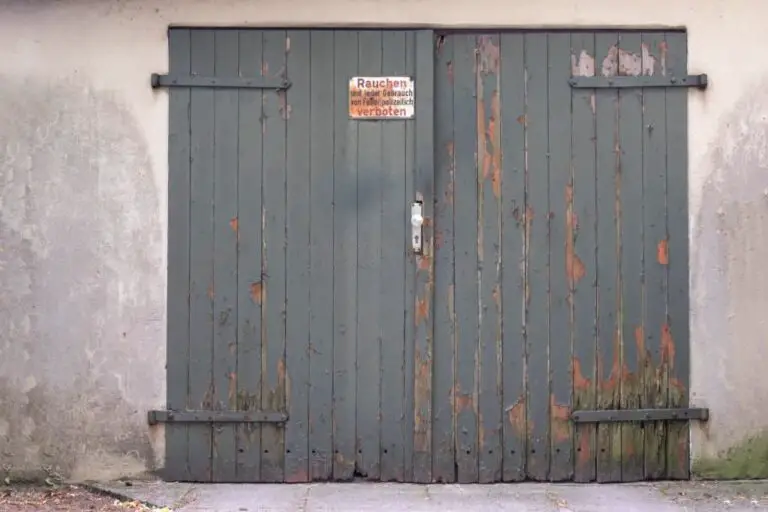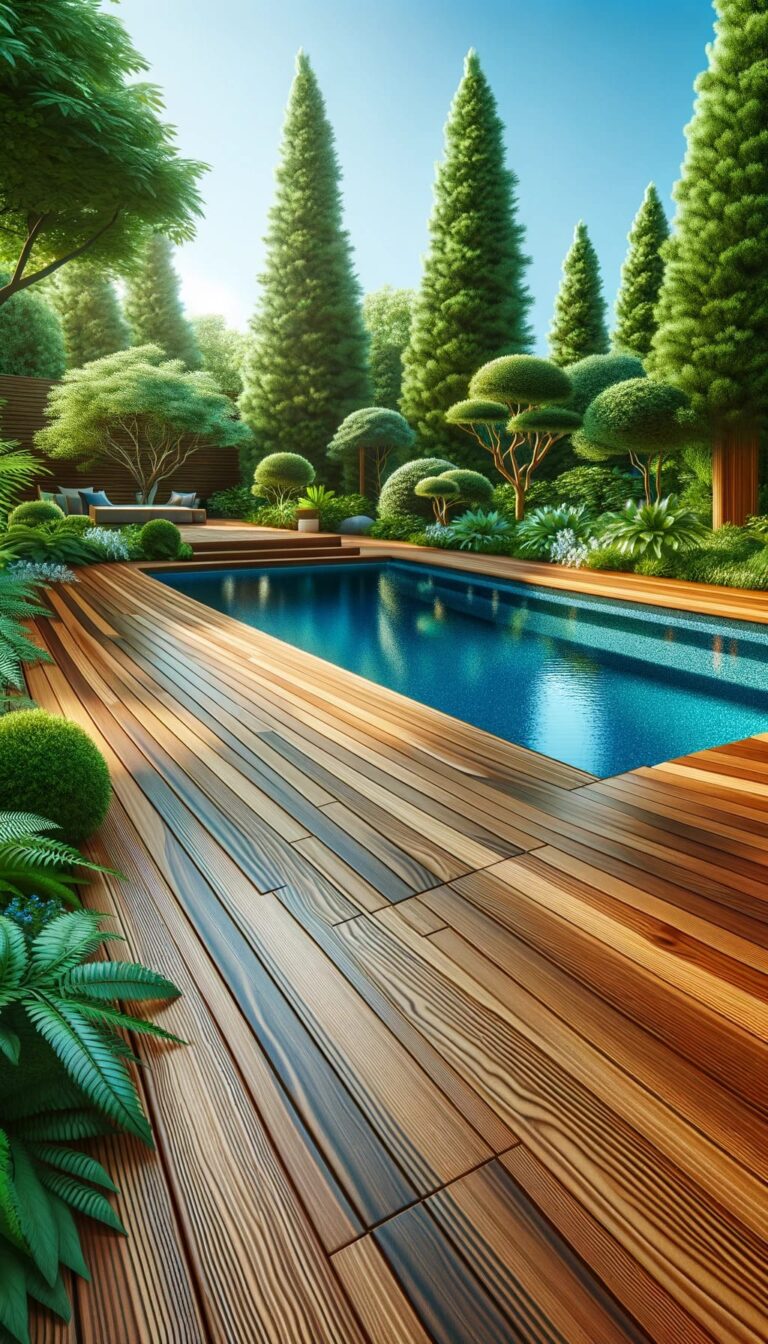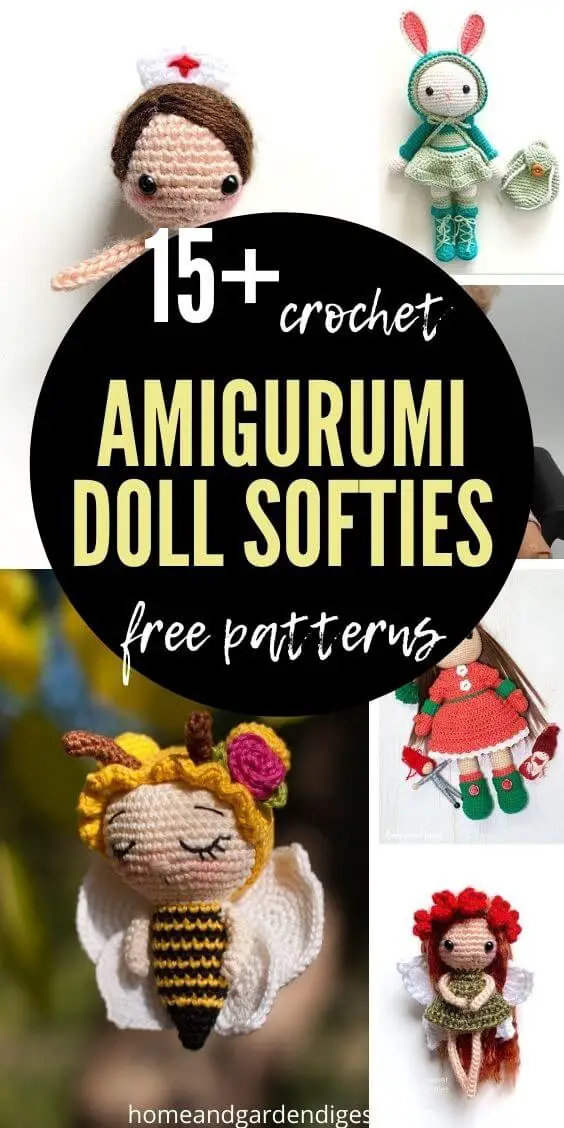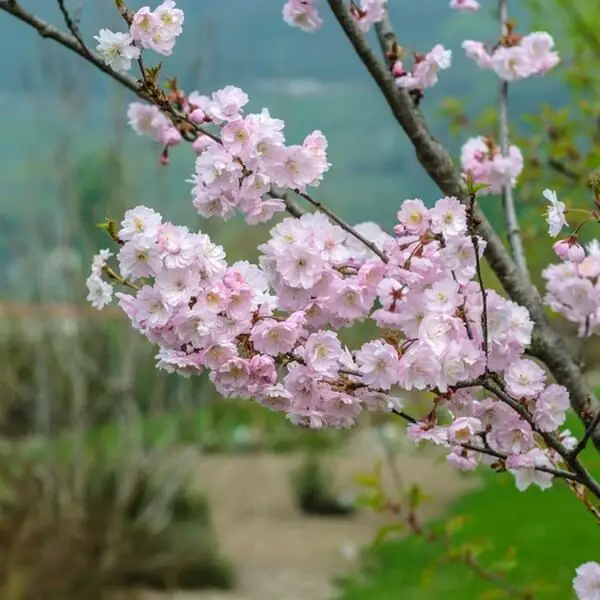18 Beautiful Round Garden Bed Ideas That Will Transform Your Landscape
Looking to add a touch of uniqueness to your garden design? Consider incorporating round garden beds, which offer a combination of form and function. Not only do they enhance the aesthetic appeal of your outdoor space, but they also provide space efficiency and versatility in design and planting. The circular shape allows for creative gardening solutions that cater to your individual needs and preferences. With so many benefits, it’s no wonder why round garden beds are gaining popularity.
In this article, we’ll explore the advantages of using round garden beds, as well as some inspiration and ideas to get you started. From floral paradises to edible gardens, succulent sculptures to pollinator havens, there’s a round garden bed design that’s sure to suit your style. We’ll also cover designing your round garden bed, choosing the right location and size, materials for construction, and tips on planting and maintenance.
So, let’s dive in and discover the many benefits of round garden beds.
Benefits of Round Garden Beds
Aesthetic Appeal
Round garden beds infuse outdoor spaces with an undeniable charm, setting them apart from traditional square or rectangular designs. The fluid curves and organic shapes of circular beds create a visual feast that draws the eye and encourages exploration. As the focal point of your garden, these curved beds effortlessly guide the viewer’s gaze through the space, imbuing it with a sense of movement and continuity.
By incorporating round garden beds into your landscape design, you can subtly soften the overall aesthetic, creating a more naturalistic and less rigid atmosphere that invites contemplation and discovery.
Space Efficiency
One of the often-overlooked benefits of round garden beds is their ability to maximize space utilization. Their unique shape allows them to seamlessly fit into areas that might otherwise lie dormant, thereby optimizing your garden’s overall layout. Whether you’re working with a sprawling backyard or a compact green oasis, round garden beds can be tailored to suit any size or style.
By leveraging this versatile design, you can efficiently expand your planting area without requiring significant alterations to your existing garden structure.
Accessibility and Flexibility
Round garden beds offer a unique combination of form and function. Their circular design makes it easy to access all areas of the bed, reducing the physical strain associated with traditional rectangular gardens. This accessibility is particularly beneficial for individuals who may have mobility limitations or find bending and stretching uncomfortable. Furthermore, the curved shape provides an ideal canvas for creative planting schemes.
Whether you prefer a single type of plant or a vibrant mix of colors and textures, round garden beds allow for endless experimentation and self-expression. By incorporating these circular beds into your outdoor space, you not only enhance its visual appeal but also improve its usability. This practical yet beautiful solution is perfect for gardeners seeking to maximize their space while enjoying the freedom to create and design.
Designing Your Round Garden Bed
Choosing the Right Location
As you begin designing your round garden bed, selecting the ideal location is essential. To make an informed decision, consider three key factors: sunlight, drainage, and visibility. Most plants thrive in sunny spots, so identify areas that receive sufficient direct light throughout the day. However, some species prefer shade, so take this into account when planning. Additionally, ensure the chosen spot provides adequate drainage to prevent water accumulation after rainfall.
Finally, think about where you can easily see and appreciate your garden bed, taking pride in your hard work and adding visual appeal to your outdoor space.
Size and Scale
When designing a round garden bed, it’s essential to consider the size in relation to the space you have available and the effect you wish to achieve. A smaller bed can be ideal for adding subtle touches or working with limited areas, while a larger one can become a striking focal point in your garden. The key is to think about what you want to plant and how much space those plants will require as they grow. This will help you determine the perfect size for your round garden bed.
When choosing the size of your round garden bed, consider the following:
* Small: Accent features in small spaces, with limited plant options that are easy to manage.
* Medium: Suitable for most gardens, offering a balance between variety and manageability.
* Large: Ideal for centerpieces or large gardens, but be aware that they require more maintenance and offer greater variety.
Materials for Construction
The material selection for your garden bed has a significant impact on both its visual appeal and longevity. Popular options include stone, brick, wood, and metal, each boasting its own set of advantages. Durable choices like stone and brick can seamlessly integrate with various garden styles, while wood offers a natural aesthetic that may require more upkeep to prevent rot. Metal, when treated to resist rust, provides a modern feel and longevity.
When making your selection, consider the style you envision for your garden, as well as the time and financial investment required to maintain the chosen material. A comprehensive analysis of these factors will enable you to create a stunning and lasting feature that complements your outdoor space. Each decision, including location, size, and material choice, plays a vital role in crafting a beautiful and thriving garden bed.
Round Garden Bed Ideas and Inspirations
Floral Paradise
To create a floral paradise in your round garden bed, focus on selecting a diverse array of seasonal flowers that provide a kaleidoscope of colors throughout the year. Start by choosing blooms that peak at different times, ensuring there’s always something new to admire. Consider the height and spread of each plant to achieve a balanced and visually appealing composition. Imagine your garden bed as a stage where each flower gets its moment in the spotlight.
When selecting flowers, think about the color palette for each season:
Spring: Tulips and Daffodils burst forth with bright, vibrant hues.
Summer: Roses and Lavender unfurl with warm, inviting tones.
Autumn: Chrysanthemums bring depth and richness to your garden bed.
Winter: Hellebores add subtle elegance to the winter landscape.
Edible Garden
A harmonious blend of function and beauty is achieved when an edible garden is designed in a round bed. By selecting a mix of vegetables, herbs, and edible flowers that not only tantalize the taste buds but also delight the eyes, the result is a visually stunning space that’s also a reliable source of fresh produce. The key to creating such a haven lies in carefully arranging plants according to their height and harvest time.
This thoughtful approach ensures that your garden provides both an abundance of nutritious edibles and a feast for the senses, with vibrant colors and textures adding depth and visual interest.
Some exemplary plant combinations include vegetables like tomatoes and lettuce, which offer a fresh and nutritious bounty; herbs such as basil and thyme, which add flavorful and aromatic notes to any dish; and edible flowers like nasturtiums and violas, whose colorful blooms can be enjoyed as a sweet and crunchy snack.
Succulent Sculpture
In arid environments, a succulent sculpture garden is an ideal solution. This type of garden features drought-resistant succulents and cacti that come in a diverse range of shapes, sizes, and hues. By strategically selecting and positioning these plants, you can create a visually striking display that necessitates minimal water maintenance.
The unique characteristics of succulents make them perfect for low-maintenance gardening, offering a variety of options to suit different tastes and preferences. For instance, agave species boast large, striking foliage with shades of green and blue, while echeveria varieties offer medium-sized rosettes in pink, red, and green hues. Sedum, on the other hand, can be found in small to medium sizes, featuring vibrant yellow and red colors.
With a succulent sculpture garden, you can enjoy a beautiful and resilient outdoor space that thrives even in dry conditions.
Pollinator Haven
Creating a Pollinator Haven in your garden means selecting plants that attract bees, butterflies, and other beneficial insects. These vital creatures play a crucial role in maintaining the health of your garden and the broader ecosystem. To ensure a constant supply of food for pollinators, incorporate a diverse range of plants with varying bloom times. This will provide a perpetual source of sustenance for these essential insects, as well as contribute to their overall well-being.
Some excellent options include lavender, which attracts bees and butterflies in early to late summer, sunflowers that draw in bees and birds during the summer months, and coneflowers, which are a hit with both butterflies and bees from summer to autumn.
Zen Retreat
To cultivate a sense of serenity and contemplation, consider designing a Zen-inspired retreat in your own backyard. This aesthetic is characterized by simplicity, minimalism, and an emphasis on natural elements. To achieve this look, incorporate stones and gravel into your garden bed, using them to create patterns and visual interest. Additionally, choose low-maintenance plants with simple, delicate foliage that won’t compete with the rugged beauty of the rocks and gravel.
By combining these elements, you can create a peaceful oasis that invites reflection and calm. This design theme can be adapted to suit your personal style and gardening needs, whether you’re looking for a serene escape or a functional space for growing herbs and vegetables. Ultimately, the possibilities are endless, and with a little creativity, you can bring a touch of Zen into your own garden.
Vegetable Garden Design
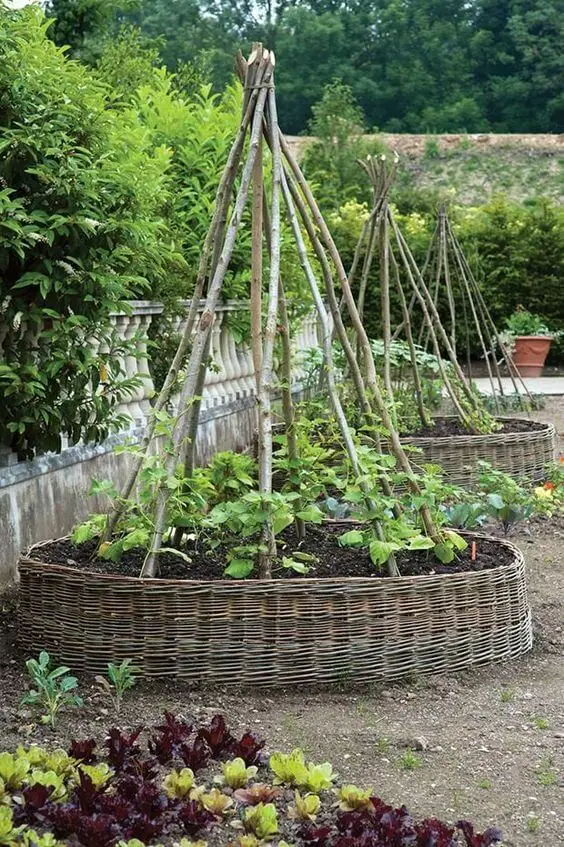
Veggie Garden without digging

Log Garden Bed

Brick Garden Bed
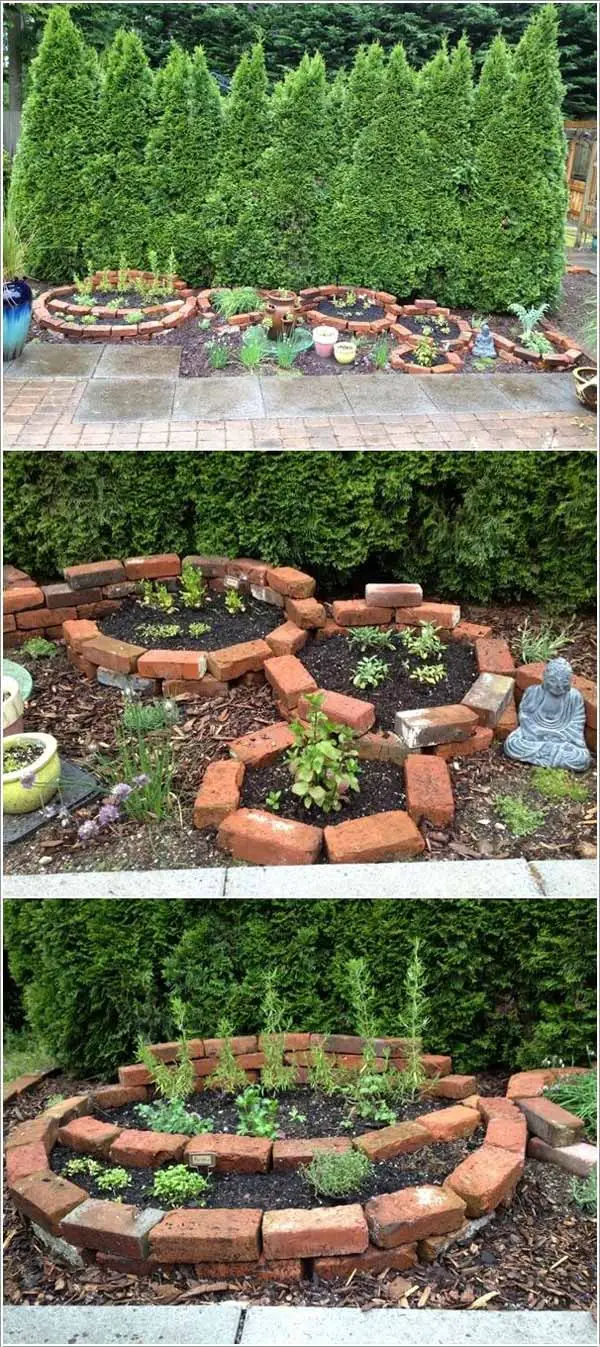
Metal planter
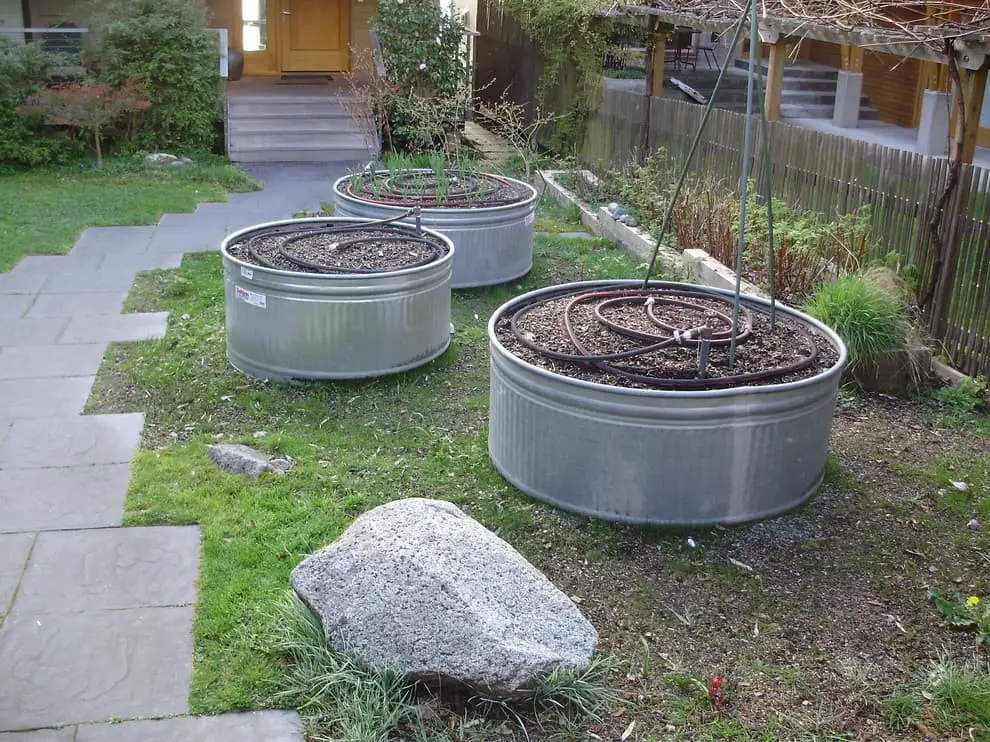
Square logs
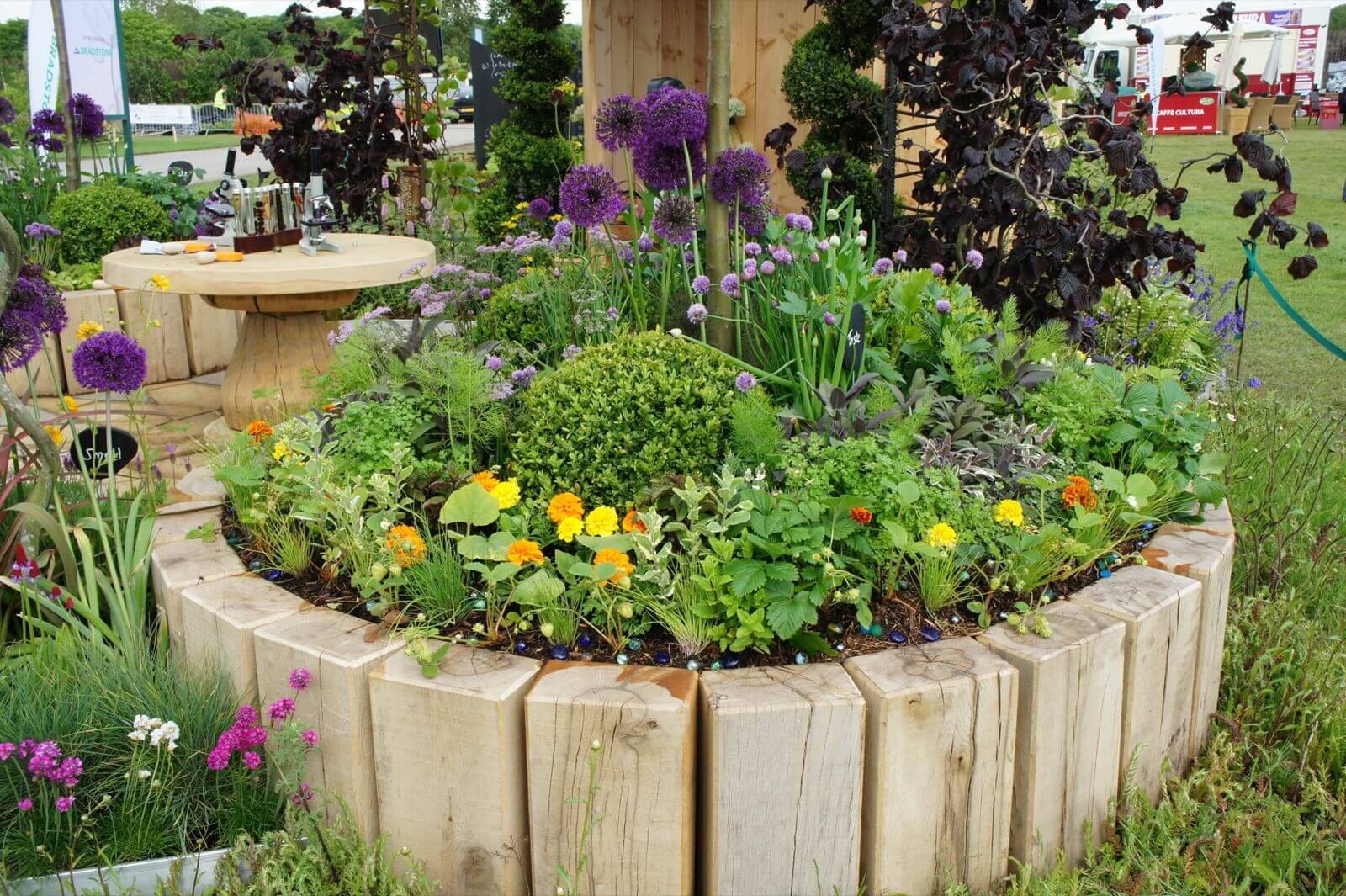
Wheel herb garden
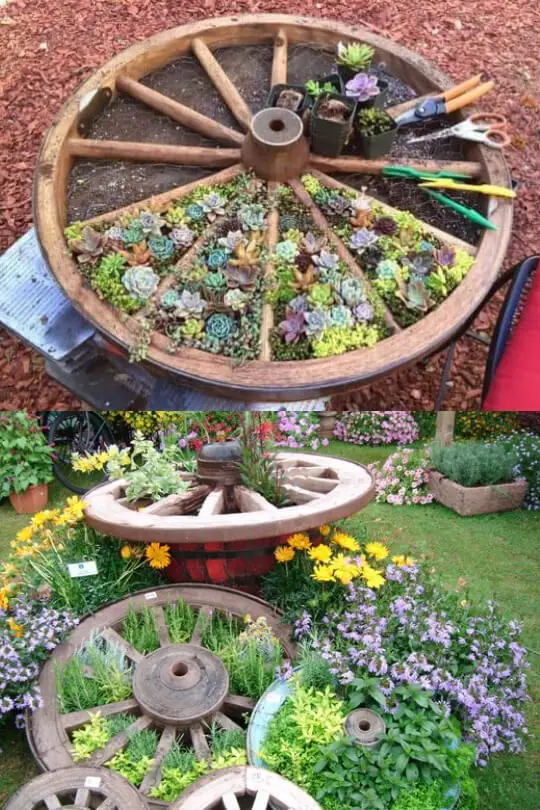
Stone garden bed
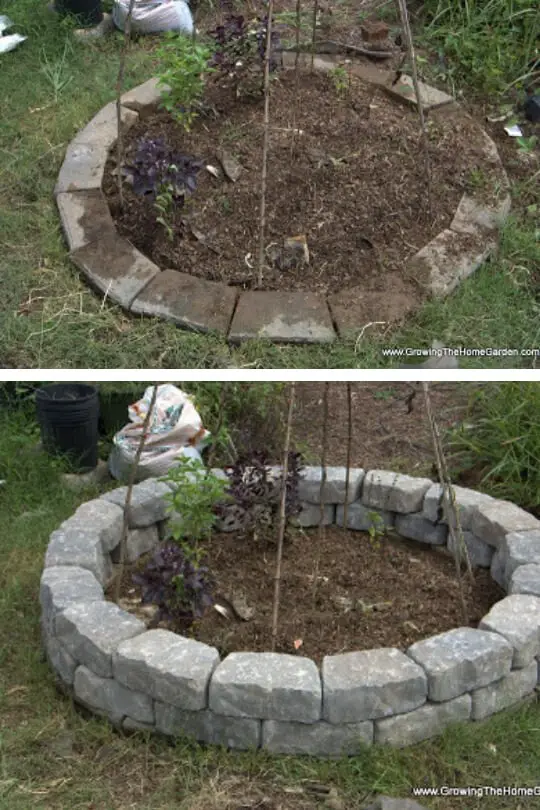
Colorful Block Garden Bed
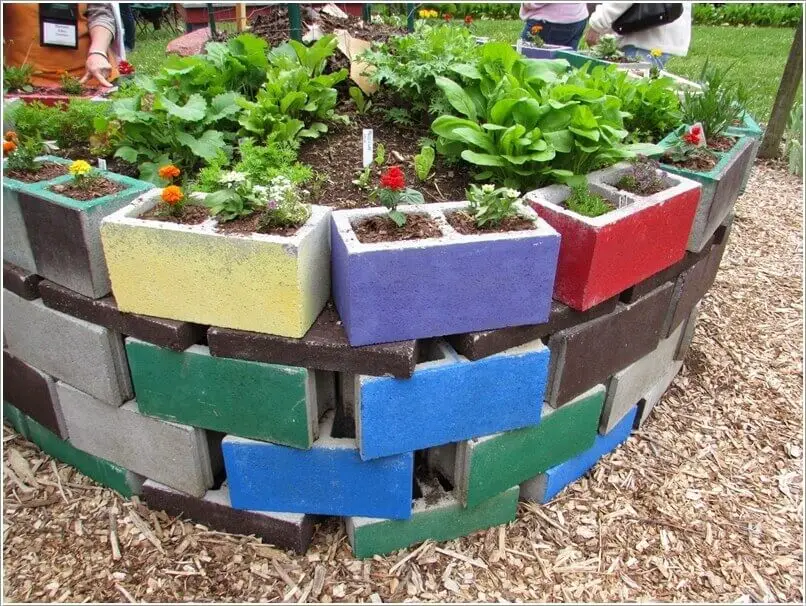
Willow Raised Bed
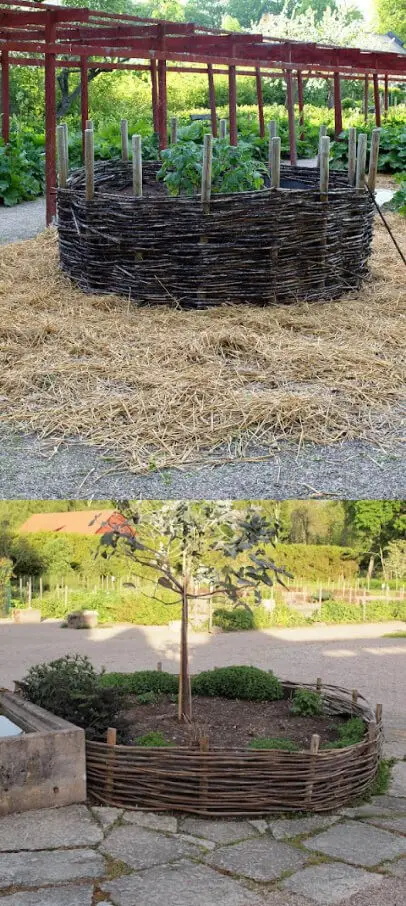
Garden bed from steel pipe
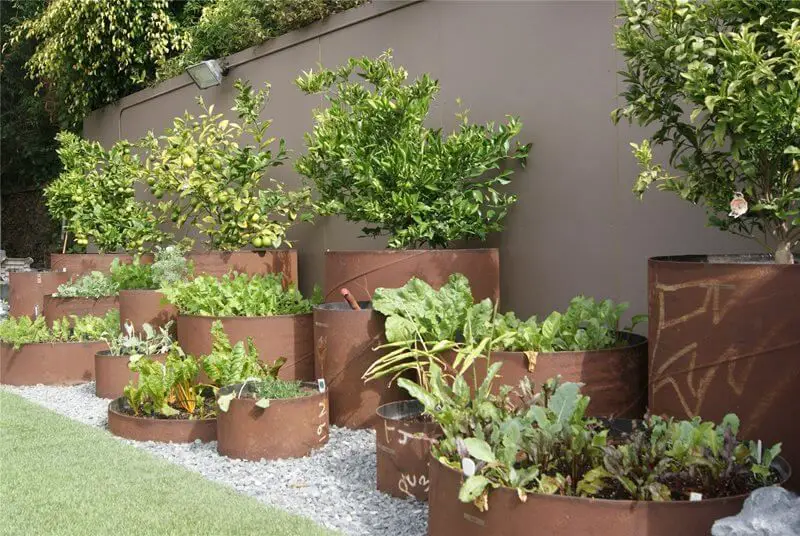
Tired garden bed
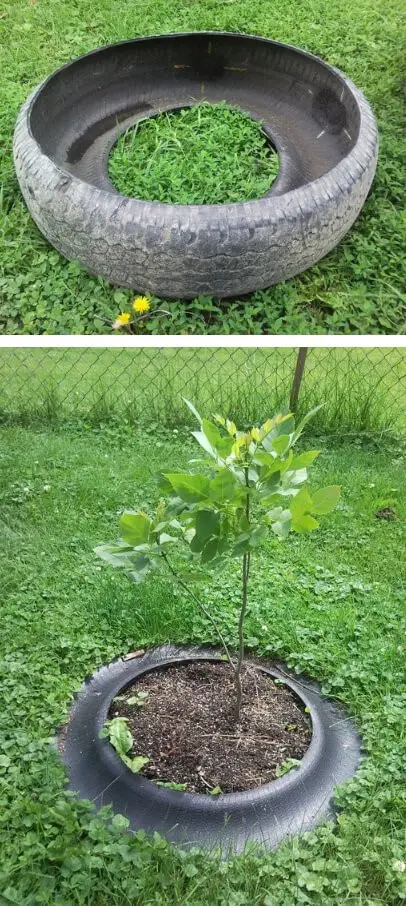
Steel Raised Bed
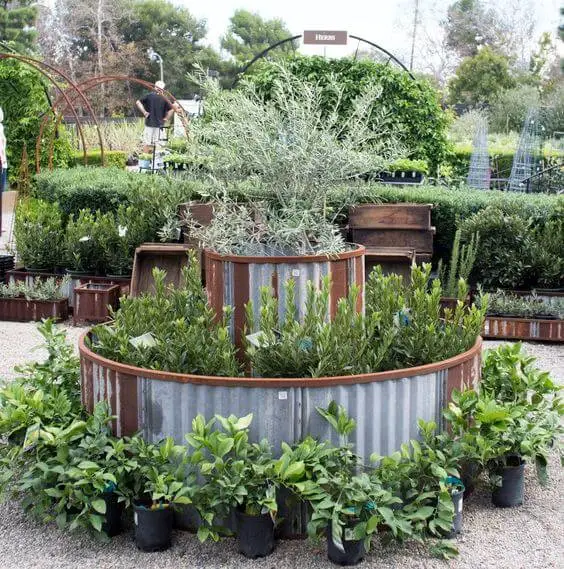
Keyhole garden
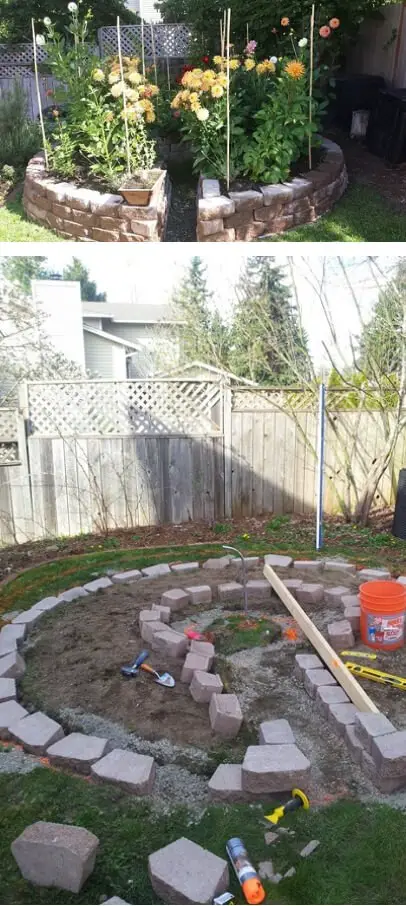
Pipe Garden Bed
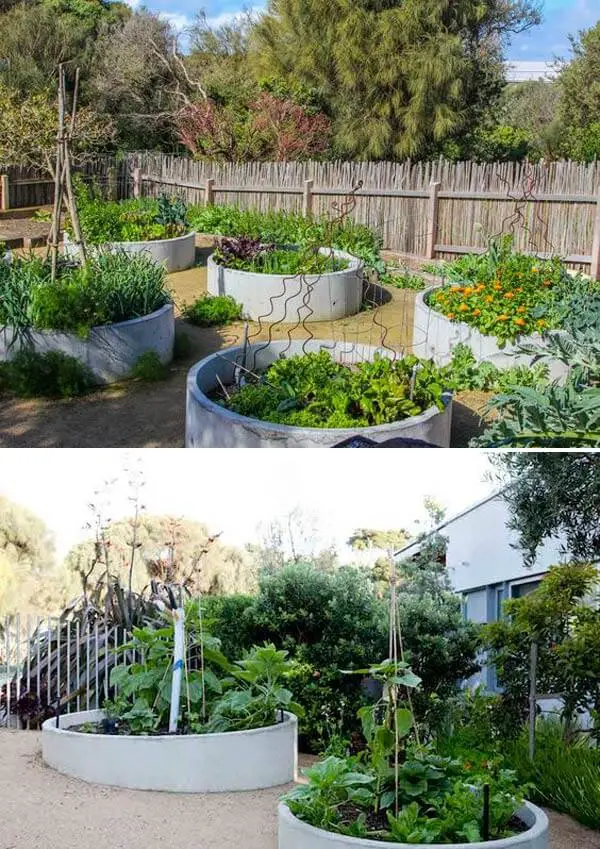
Circular Garden Bed
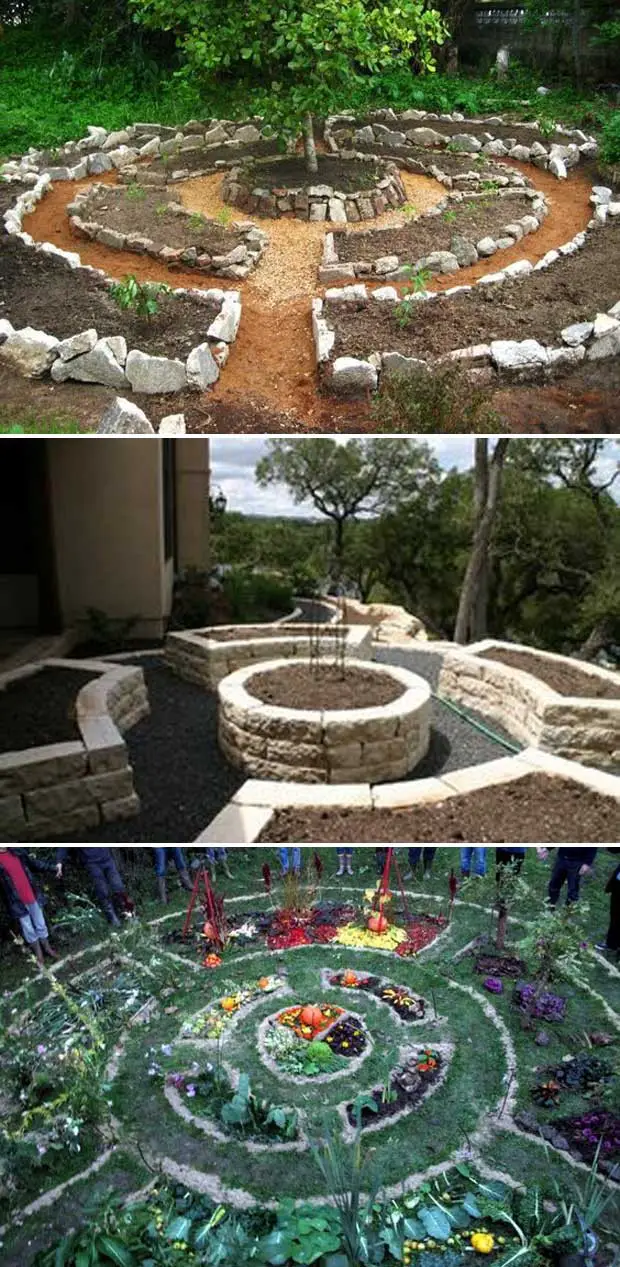
Plants as Garden Bed Edging

Stone Edging around Mailbox

Planting and Maintenance Tips
Soil Preparation
To set your plants up for success, proper soil preparation is crucial. Before you start planting, it’s essential to understand the type and pH level of your soil. This will help you determine if any amendments are needed to enhance its quality. In general, most plants thrive in well-draining soil rich in organic matter. To achieve this, consider adding compost or aged manure to the soil before planting. This simple step can make a significant difference in the health and growth of your plants.
To get started, use a soil test kit to determine the pH and type of your soil. Once you have this information, you can decide if any amendments are necessary to improve its quality. If so, add compost or aged manure to the soil as needed. Finally, till the soil using a garden fork or tiller to enhance drainage and aeration.
Plant Selection
When it comes to selecting the perfect plants for your garden, one of the most critical factors is ensuring they thrive in the specific climate, soil, and sunlight conditions. To achieve this, research plants that are well-suited to your local environment and take into account the unique characteristics of your garden bed, including the amount of direct sunlight it receives each day.
Some plants flourish under full sun, while others require partial shade or even full shade to reach their full potential. By carefully matching plant types to your garden’s conditions, you can create a thriving and healthy environment that showcases the beauty of your outdoor space.
Irrigation Strategies
Conserving water and ensuring your plants receive the right amount of moisture is crucial. One effective way to achieve this is by adopting efficient irrigation strategies. Drip irrigation, in particular, is an excellent option as it delivers water directly to the roots of the plants, minimizing waste and reducing the spread of diseases that can occur with traditional overhead watering methods.
In addition to drip irrigation, applying mulch around your plants helps retain moisture in the soil, reduces evaporation, and keeps weeds at bay. Regularly monitoring soil moisture levels is also essential to prevent overwatering or underwatering. By implementing these strategies, you can conserve water, promote healthy plant growth, and reduce maintenance tasks.
Seasonal Care
To unlock the full potential of your garden bed, it’s essential to provide the suitable seasonal care. This involves a range of tasks, such as pruning to stimulate growth and remove any damaged or diseased branches, mulching to safeguard roots and regulate soil temperature, and implementing pest control measures to keep your plants in top condition.
As each season presents its unique set of requirements, it’s crucial to stay informed and take proactive steps to ensure your garden remains both beautiful and productive throughout the year. For instance, spring pruning helps promote growth, while summer mulching retains moisture and controls soil temperature. In autumn, pest control measures prepare plants for winter, reducing the risk of pests and diseases.
Finally, winter protection ensures the survival of your plants by shielding them from harsh temperatures. By following these planting and maintenance tips, you can cultivate a thriving garden that is not only visually stunning but also sustainable.
Enhancing Your Round Garden Bed
Lighting
Transforming your round garden bed into a breathtaking nighttime feature is as simple as adding the right lighting. Select lights that harmonize with your garden’s style, highlighting its most striking aspects. Solar-powered options are an excellent choice, not only because they’re eco-friendly but also easy to install. Strategically place them along the perimeter of the bed or use spotlights to focus on specific plants or decorative elements, creating a warm and inviting ambiance.
For added allure, consider soft lights that radiate a cozy glow. With these placement tips, you can elevate your garden’s beauty day and night: solar lights for eco-friendly illumination around the perimeter, spotlights to highlight features directed at specific plants or elements, and path lights to guide visitors along walkways leading to the garden bed.
Accessories
To elevate the aesthetic appeal of your round garden bed, consider incorporating decorative accessories that reflect your personal style. Focal points can be created using unique elements such as sculptures, stepping stones, or a central water feature. The latter, for instance, not only provides a visually appealing addition but also serves as a functional water source for visiting birds.
When selecting accessories, ensure they harmonize with the overall theme of your garden to create a cohesive look. For example, a bird bath can add a playful touch while fulfilling its purpose as a watering hole. In terms of functionality, consider using stepping stones to guide visitors through or around the bed, while sculptures can be strategically placed to draw attention and create visual interest.
Ultimately, thoughtful accessory choices can transform your round garden bed into a charming outdoor oasis that reflects your unique personality.
Borders and Edging
A well-defined round garden bed with borders and edging is essential for creating a visually appealing and functional outdoor space. The choice of materials such as stone, brick, or metal can greatly impact the overall aesthetic, while also serving to contain mulch and prevent grass from encroaching into the bed. When selecting edging materials, consider their durability and ability to withstand the elements, as well as how they will complement the garden’s design.
The benefits of using different materials include a natural look with stone, traditional and versatile options with brick, and modern clean lines with metal. When choosing rust-resistant options, such as certain metals, you can ensure that your edging remains looking its best for years to come. Incorporating lighting, accessories, and attractive borders and edging is crucial for enhancing the beauty and enjoyment of your round garden bed.
These elements not only improve the garden’s aesthetics during the day but also extend its appeal into the night, creating a magical outdoor space that you and your guests can enjoy at any time.
Conclusion
By embracing circular garden bed designs, you’re unlocking a world of creative possibilities that seamlessly blend beauty and functionality in your outdoor space. These unique arrangements not only elevate the visual appeal of your garden but also offer practical benefits like maximized space efficiency, improved accessibility, and innovative plant layouts.
As you embark on your own round garden bed journey, you’ll discover endless opportunities to cultivate a floral paradise, nurture an edible oasis, craft succulent sculptures, or create a serene Zen retreat. The possibilities are truly limitless! We encourage you to share your experiences, insights, and creations with us, inspiring others to explore their own gardening adventures.
Let’s come together as a community of garden enthusiasts celebrating the beauty and diversity of round garden beds, cultivating a sense of belonging and growth through our shared passion for gardening.
FAQs About Round Garden Bed Ideas
Why choose a round garden bed over traditional shapes?
The beauty of round garden beds lies in their ability to deviate from the conventional square or rectangular layout, injecting visual interest into your outdoor space. By abandoning the traditional grid, these circular planters can create striking focal points and encourage creative expression, making the most of even the smallest gardens.
What materials are best for constructing a round garden bed?
When it comes to selecting materials for your garden path, there’s no one-size-fits-all solution. Your choice will depend on the overall aesthetic you’re aiming for, as well as practical considerations like budget and maintenance needs. Durable options like stone and brick are great choices for those who want a low-maintenance option, while wood can add a natural charm to your garden – just be prepared for slightly more upkeep required.
For a modern look, metal is another viable option, especially when treated with rust-resistant coatings.
Can round garden beds fit in small spaces?
While round garden beds may not seem like an obvious choice for smaller gardens, they actually offer a high degree of adaptability. This unique shape enables them to be placed in a variety of ways, allowing homeowners to make the most of even the smallest outdoor spaces. By strategically positioning these beds, gardeners can create a visually appealing and functional outdoor area that maximizes available space.
What are some planting ideas for a round garden bed?
Discover the versatility of gardening by exploring various themes. From a vibrant floral paradise that offers year-round color through seasonal blooms, to an edible garden bursting with fresh vegetables and herbs, there’s something for everyone. For those seeking low-maintenance options, consider a drought-resistant setup featuring resilient succulents and cacti. Alternatively, create a pollinator haven by attracting bees and butterflies with nectar-rich flowers.
Or, cultivate a sense of serenity with a Zen retreat that combines minimalist plantings with decorative stones. Whatever theme you choose, get ready to unleash your creativity and bring the beauty of nature into your outdoor space.
How do I select the right location for my round garden bed?
When selecting the perfect location for your garden, consider the trifecta of factors: sunlight, drainage, and visibility. Ensure that the spot receives an optimal amount of sunlight tailored to the specific needs of your plants, features reliable drainage to prevent waterlogged soil, and is strategically positioned for maximum enjoyment from key vantage points in your garden or home.
What are some tips for maintaining a round garden bed?
To maintain a lush and thriving garden, it’s essential to prioritize regular maintenance tasks. This includes consistent watering, which is crucial for delivering the necessary nutrients and hydration to your plants. Mulching is another key aspect of gardening, as it helps retain moisture, suppress weeds, and regulate soil temperature. Seasonal care is also vital, with activities like pruning and deadheading flowers playing a significant role in promoting healthy growth and encouraging blooms.
Furthermore, keeping an eye out for pests and taking steps to control them is necessary to prevent damage and disease. To take your gardening game to the next level, consider investing in a drip irrigation system, which can help reduce water waste and ensure that your plants receive the precise amount of moisture they need.
How can I enhance the look of my round garden bed?
Transform your outdoor space by incorporating nighttime ambiance through strategic lighting. This can be achieved by highlighting key features such as sculptures or water features, creating visually appealing focal points that draw the eye. Additionally, implementing thoughtful bordering and edging techniques can elevate the overall aesthetic of your garden bed, imparting a sense of polish and sophistication.
Are round garden beds suitable for growing food?
When it comes to cultivating a diverse array of vegetables, herbs, and edible flowers, round garden beds can be an excellent choice. However, it’s crucial to thoughtfully plan your space and choose plants that harmonize in terms of their height, sunlight requirements, and water needs.
How do I prepare the soil for a round garden bed?
Before planting, it’s essential to determine the type and pH level of your soil through a simple testing process. Based on the results, you can then take steps to enhance its nutritional value and water retention capabilities by incorporating compost or aged manure into the mix. By taking this crucial step in soil preparation, you’ll be laying the groundwork for a healthy and thriving plant growth.
Can I create a round garden bed on a budget?
To construct a circular garden bed without breaking the bank, consider repurposing readily available materials like reclaimed bricks, natural stones, or sustainable wooden planks. This eco-friendly approach not only reduces waste but also saves you money in the long run. Furthermore, beginning your plant collection from scratch by sowing seeds can be a cost-effective alternative to purchasing mature plants from nurseries.

